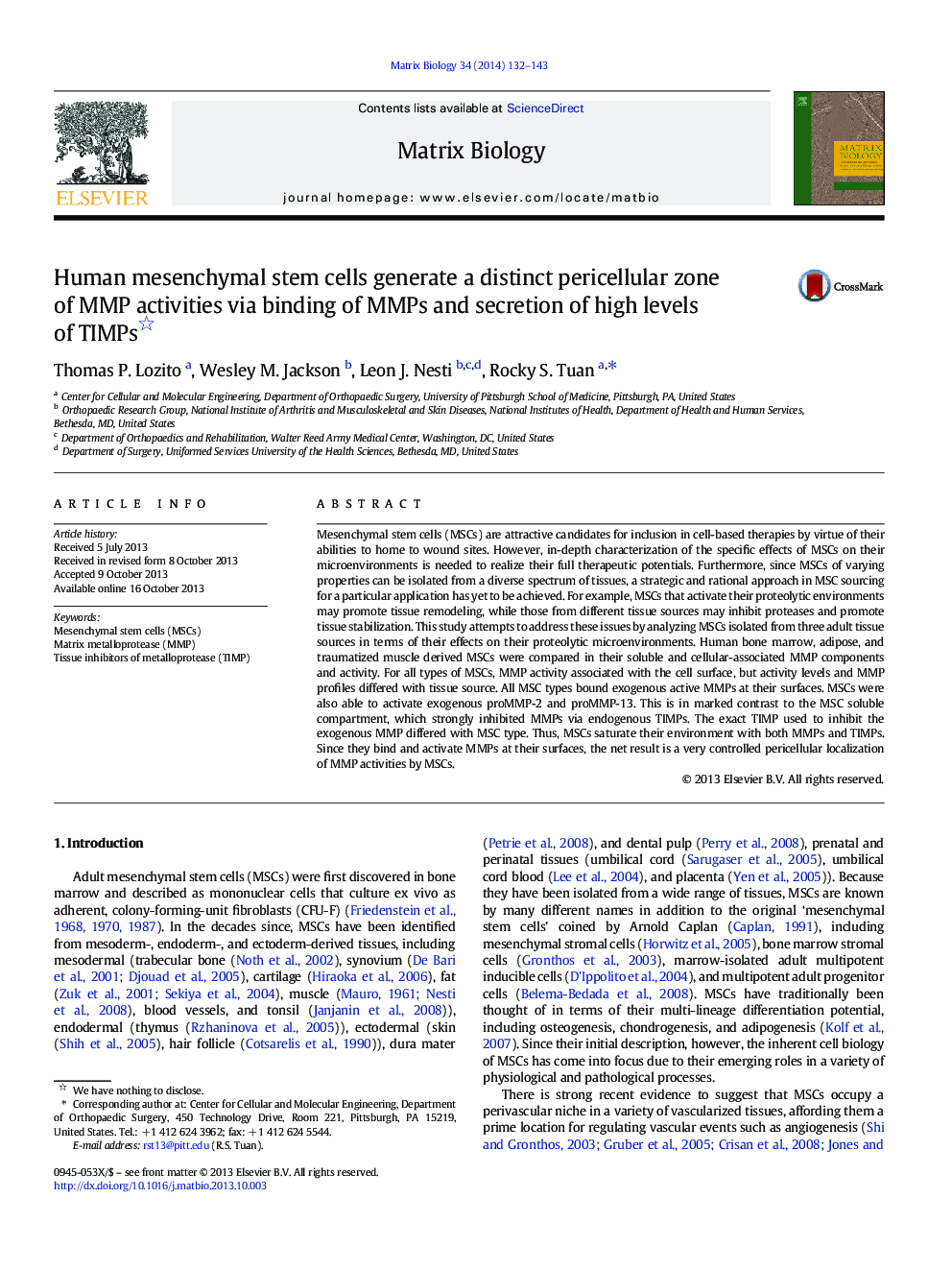| کد مقاله | کد نشریه | سال انتشار | مقاله انگلیسی | نسخه تمام متن |
|---|---|---|---|---|
| 8455450 | 1548022 | 2014 | 12 صفحه PDF | دانلود رایگان |
عنوان انگلیسی مقاله ISI
Human mesenchymal stem cells generate a distinct pericellular zone of MMP activities via binding of MMPs and secretion of high levels of TIMPs
دانلود مقاله + سفارش ترجمه
دانلود مقاله ISI انگلیسی
رایگان برای ایرانیان
کلمات کلیدی
موضوعات مرتبط
علوم زیستی و بیوفناوری
بیوشیمی، ژنتیک و زیست شناسی مولکولی
تحقیقات سرطان
پیش نمایش صفحه اول مقاله

چکیده انگلیسی
Mesenchymal stem cells (MSCs) are attractive candidates for inclusion in cell-based therapies by virtue of their abilities to home to wound sites. However, in-depth characterization of the specific effects of MSCs on their microenvironments is needed to realize their full therapeutic potentials. Furthermore, since MSCs of varying properties can be isolated from a diverse spectrum of tissues, a strategic and rational approach in MSC sourcing for a particular application has yet to be achieved. For example, MSCs that activate their proteolytic environments may promote tissue remodeling, while those from different tissue sources may inhibit proteases and promote tissue stabilization. This study attempts to address these issues by analyzing MSCs isolated from three adult tissue sources in terms of their effects on their proteolytic microenvironments. Human bone marrow, adipose, and traumatized muscle derived MSCs were compared in their soluble and cellular-associated MMP components and activity. For all types of MSCs, MMP activity associated with the cell surface, but activity levels and MMP profiles differed with tissue source. All MSC types bound exogenous active MMPs at their surfaces. MSCs were also able to activate exogenous proMMP-2 and proMMP-13. This is in marked contrast to the MSC soluble compartment, which strongly inhibited MMPs via endogenous TIMPs. The exact TIMP used to inhibit the exogenous MMP differed with MSC type. Thus, MSCs saturate their environment with both MMPs and TIMPs. Since they bind and activate MMPs at their surfaces, the net result is a very controlled pericellular localization of MMP activities by MSCs.
ناشر
Database: Elsevier - ScienceDirect (ساینس دایرکت)
Journal: Matrix Biology - Volume 34, February 2014, Pages 132-143
Journal: Matrix Biology - Volume 34, February 2014, Pages 132-143
نویسندگان
Thomas P. Lozito, Wesley M. Jackson, Leon J. Nesti, Rocky S. Tuan,